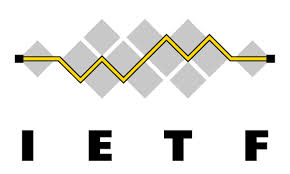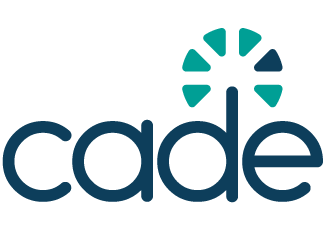Internet Engineering Task Force

Acronym: IETF
Established: 1986
Address: IETF Secretariatc/o Association Management Solutions, LLC (AMS)48377 Fremont Blvd., Suite 117Fremont, California 94538USA
Website: https://www.ietf.org/
The Internet Engineering Task Force (IETF), founded in 1986, is the premier standards development organisation (SDO) for internet technologies. It is an open international community that develops voluntary technical standards that shape the trajectory of the internet. The IETF is responsible for many of the core technical standards that comprise the internet protocol suite (TCP/IP). Importantly, unlike traditional organisations, it has no formal membership requirements; any interested person can participate on equal footing, and all IETF participants are volunteers contributing as individuals. This open model has made the IETF a backbone of internet development, ensuring that key protocols are developed collaboratively and transparently for the benefit of the global internet.
The IETF’s work has significantly shaped technologies used by most internet users – virtually every internet user today relies on technologies that the IETF has standardised, from loading a web page or sending an email to securely transmitting sensitive information.
Importantly, the IETF’s developed standards are all freely available in RFC (Requests for Comment) documents and implemented voluntarily by developers and companies worldwide. Major technology companies and network operators build their products and services on top of IETF standards, and governments reference IETF standards as benchmarks for procurement and policy. In short, the IETF’s key achievement is the very existence of a globally interoperable internet. Its standards ensure that a message sent from a device in one part of the world can reach another device elsewhere, regardless of vendor or network, enabling the internet we have today.
The IETF’s purpose
The IETF’s primary purpose is to improve the technical functionality and interoperability of the internet by creating and promoting open standards. It brings together network engineers, developers, operators, vendors, and researchers from around the world to collaborate on technical specifications that enable interoperability across the internet. The IETF has driven internet growth and stability for decades by standardising protocols that ensure seamless interoperability across devices and networks.
Mission and principles
The IETF’s mission can be summarised as making the internet work better. More accurately explained, the IETF strives to produce high-quality, relevant technical documents – including protocol specifications and best practices – that guide how people design, use, and manage the internet. These documents – published as RFCs – are intended to improve the internet’s operation and encourage an open and accessible network for all.
To achieve this mission, the IETF is built on several guiding principles
- Open process: Any interested person can participate in IETF discussions and decision-making. All proceedings (working group mailing lists, meeting minutes, etc.) are open and publicly archived.
- Technical competence: Decisions are made based on technical merit and engineering expertise. The IETF focuses on issues where its participants are competent to contribute, and it welcomes technically sound input from any source.
- Volunteer core: The IETF is run by volunteers: People participate because they are motivated to improve the internet, not because they are bound to do so. Both the leadership and general contributors serve in their personal capacity, even if their employers support their work.
- Rough consensus and running code: The IETF favours a consensus-driven approach (rather than formal voting). Decisions emerge from discussion and agreement (rough consensus), often reinforced by working prototypes or implementations (running code) to prove that proposals work in actual practice.
- Protocol ownership: When the IETF takes on a protocol’s development, it accepts responsibility for all aspects of that protocol’s evolution. Conversely, if a protocol is outside the IETF’s scope, the organisation does not attempt to control it. This ensures clarity over which technologies the IETF stewards and respects other standards bodies’ domains.
Structure and working groups
The IETF is organised in a bottom-up, collaborative structure centred around working groups (WGs). Working groups are the primary units of work in the IETF: Each WG has a focused charter defining its specific problem area (for example, email, routing, or security) and a set of objectives for the standards or documents it will deliver.
There is no formal membership roster: Anyone can join a working group’s mailing list or attend meetings to contribute.
| Most work happens at the working group level, with higher bodies providing coordination, review, and external liaison. |
Discussions and decision-making essentially take place on the WG’s public mailing list. Periodically, WGs also meet during IETF meetings (held three times a year) to coordinate and advance their work. However, all official decisions still occur on the mailing lists so that remote participants have an equal say.
Working groups are organised into areas by topic (such as security, routing, transport, applications, etc.). Each area is overseen by one or two Area Directors (ADs) who provide guidance and management for the WGs in that area.
The collection of all Area Directors, together with the IETF Chair, forms the Internet Engineering Steering Group (IESG), responsible for the overall technical management of IETF activities. The IESG’s duties include reviewing and approving the standards that working groups develop, ensuring that each draft has been thoroughly vetted and has clear consensus before it becomes an RFC. The IETF Chair (who is also the General Area Director) leads the IESG and is the de facto head of the IETF.
The Internet Architecture Board (IAB), which provides high-level oversight and architectural direction, supersedes the IESG. The IAB is not day-to-day management but rather an advisory body that, among other things, oversees the IETF’s external relationships and helps guide long-term technical evolution. The IAB also manages the separate Internet Research Task Force (IRTF), a sister organisation for longer-term research topics (discussed more later).
In addition to these groups, the IETF is supported by an administrative staff (known as the IETF Secretariat) and the IETF Administration LLC, which handle logistics, finances, and legal matters to keep the organisation running.
Leadership positions (like Area Directors, IAB members, and the IETF Chair) are filled through a community-driven nominating committee (NomCom) process, ensuring that active participants have a say in selecting IETF leaders.
Standards development process
The IETF’s standards development process is well-defined yet relatively lightweight, relying on community consensus and iterative improvement. The process typically begins with an Internet-Draft (I-D) – a working document describing a proposed idea or protocol. Anyone can write an Internet-Draft on a topic they believe is relevant to the IETF.
Drafts are circulated and discussed, usually within a relevant working group if one exists. The draft may be revised multiple times through discussion on the mailing lists (and sometimes at meetings). When there is a rough consensus in the working group about the draft, the WG can decide to move it forward towards publication.
Once a working group agrees to advance a draft (or an individual submission from outside a WG gets support), the document enters a broader review. It may be announced for IETF Last Call, where the entire IETF community is asked to comment. The draft is then reviewed by the IESG, consisting of the Area Directors and the IETF Chair responsible for the subject matter. They may send the document back for changes or approve it. After IESG approval, the draft is passed to the RFC Editor for final editing and publication.
Approved documents are published as RFCs (Requests for Comments), which serve as the archival series for internet standards and related documents. Each RFC is assigned a unique number and is made freely available in various formats.
Some RFCs are labelled as Standards Track, meaning they are intended to become Internet Standards. Within the Standards Track, a document typically starts as a Proposed Standard and can be elevated in maturity as it gains implementation experience and community acceptance, potentially becoming an internet standard. Other RFC designations include Best Current Practice (BCP) for procedural or administrative guidance, Informational RFCs (general information or ideas not on the standards track), and Experimental RFCs for early-stage work.
Throughout this process, the IETF emphasises rough consensus and running code, but more about this in the subsection on decision-making.
CSO Engagement Mechanisms in the IETF
Digital standards are often perceived as technical formalities, but they can have broader social and policy implications. Traditionally, standards development was dominated by industry and technical experts, however, as it becomes clear that standards can influence human rights, privacy, and the openness of the internet. In the IETF context, civil society participants have been pushing for issues such as strengthening encryption to counter surveillance, incorporating human rights considerations into protocols, and complementing the engineering know-how of other participants.
Including civil society in the standards process matters because standards reflect the values of those who create them. If only one set of interests dominates the process, the resulting standards may inadvertently encode biases or neglect crucial public interest considerations.
CSOs can engage with the IETF through various avenues, ranging from direct technical contributions to broader advocacy efforts in WGs. These methods offer different levels of influence and require varying degrees of technical expertise, allowing CSOs to strategically participate in developing internet standards. The figure below presents these mechanisms.
Figure 1: Mechanisms and modalities of CSO engagement in the IETF
Data source: IETF
- Direct participation in WGs: CSOs can participate in the IETF working groups, contribute to discussions, and provide feedback on draft standards. While this requires technical expertise, it offers a direct avenue for influencing technical decisions.
- Submitting Internet-Drafts and RFCs: CSOs can propose new standards or modifications to existing ones by submitting Internet-Drafts and RFCs. This requires in-depth technical knowledge and collaboration with experts, but it can lead to significant policy impact.
- Observing and commenting: Even without direct participation, CSOs can observe IETF meetings and working group discussions, submit comments on draft documents, and raise concerns about potential human rights implications.
- Engaging in liaison relationships: The IETF maintains liaison relationships with other organisations, frequently other SDOs or internet governance organisations, including civil society groups. CSOs can leverage these relationships to provide input on policy issues and collaborate on shared goals. New liaison appointments are rare, since the best way for organisations to work with the IETF is by participating in the relevant working groups or by having IETF WG members participate directly in other organisations’ structures.
- Public Advocacy and Outreach: Raising awareness about the IETF’s work and mobilising public support for specific policy positions can indirectly influence the development of technical standards.


